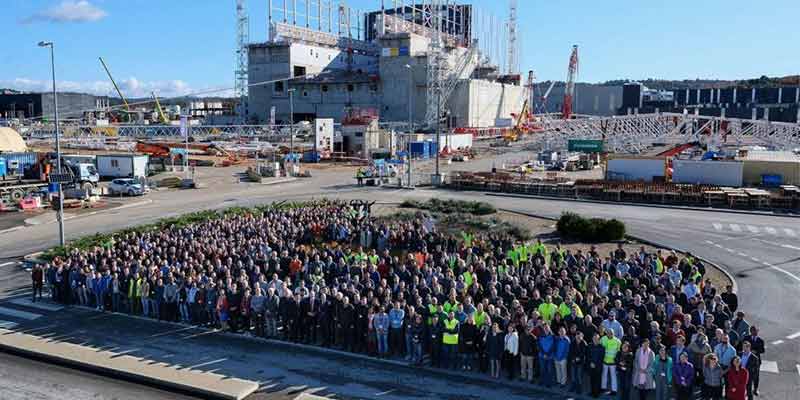- India
- Jul 30
Explainer / India’s role in ITER
The International Thermonuclear Experimental Reactor (ITER), a multi-nation project that aims to replicate energy of the Sun, is a perfect example of the age-old Indian belief ‘Vasudhaiva Kutumbakam’, Prime Minister Narendra Modi has said.
Entire world is working together for the betterment of mankind and that India stands proud with its fair share of contributions, he said.
He was addressing the start of assembly of the ITER Tokamak, the world’s largest fusion device, on July 28 at Saint-Paul-Lez-Durance in France.
What is ITER?
ITER (the Latin word for ‘The Way’) is a large-scale scientific experiment intended to prove the viability of fusion as an energy source. ITER is currently under construction in the south of France.
In an unprecedented international effort, seven partners — China, the European Union, India, Japan, Korea, Russia and the United States — have pooled their financial and scientific resources to build the biggest fusion reactor in history.
Origin of ITER
ITER was set in motion at the Geneva Superpower Summit in November 1985, when the idea of a collaborative international project to develop fusion energy for peaceful purposes was proposed by General Secretary Gorbachev of the former Soviet Union to US President Reagan.
One year later, an agreement was reached. The European Union (Euratom), Japan, the Soviet Union and the US joined to pursue the design for a large international fusion facility, ITER. Conceptual design work began in 1988, followed by increasingly detailed engineering design phases until the final design for ITER was approved by the members in 2001.
On-site construction of the scientific facility began in 2010. As the buildings rise at the ITER site in southern France, the fabrication of large-scale mockups and components is underway in the factories of the seven ITER members. The shipment of the first completed components began in 2014 and will continue into the 2020s. Machine assembly will begin as soon as the giant Tokamak Complex is ready for occupation.
What is the significance of ITER?
ITER will not produce electricity, but it will resolve critical scientific and technical issues in order to take fusion to the point where industrial applications can be designed. By producing 500 MW of fusion power from 50 MW of power injected in the systems that heat the plasma — a “gain factor” of 10 — ITER will open the way to the next step: a demonstration fusion power plant.
First plasma is planned for December 2025.
ITER is one of the most complex scientific and engineering projects in the world today. The complexity of the ITER design has already pushed a whole range of leading-edge technologies to new levels of performance. However, further science and technology are needed to bridge the gap to the commercialisation of fusion energy.
Each member has created a domestic agency to fulfil its procurement responsibilities to ITER.
Taken together, the ITER members represent three continents, over 40 languages, half of the world’s population and 85 percent of global gross domestic product.
India’s role in ITER
India became a full partner of ITER in December 2005. ITER-India, Institute for Plasma Research (IPR), located in Gandhinagar, Gujarat is the Indian domestic agency to design, build and deliver the contributions to ITER.
India is responsible for delivery of the following ITER packages:
* Cryostat
* In-wall Shielding
* Cooling Water System
* Cryogenic System
* Ion-Cyclotron RF Heating System
* Electron Cyclotron RF Heating System
* Diagnostic Neutral Beam System
* Power Supplies
* Diagnostics.
Manorama Yearbook app is now available on Google Play Store and iOS App Store

